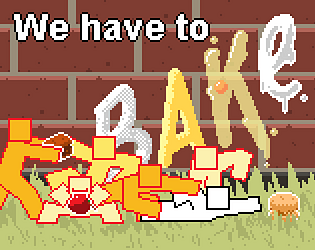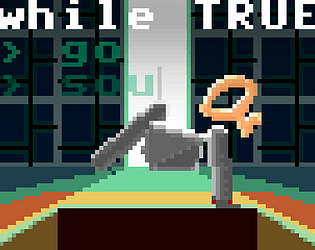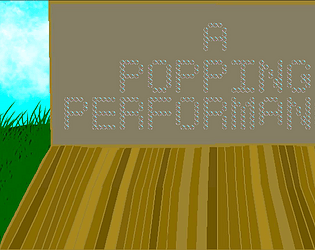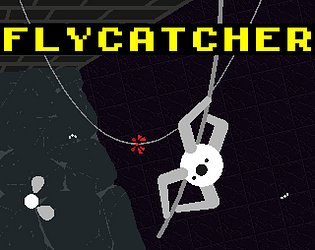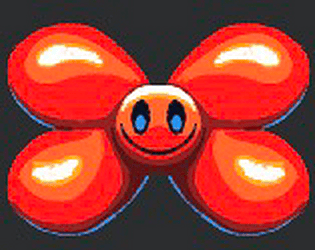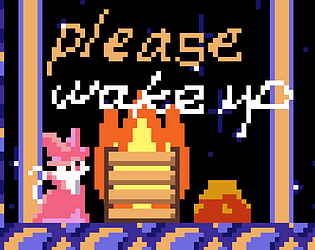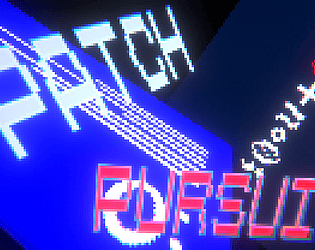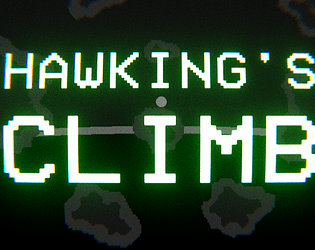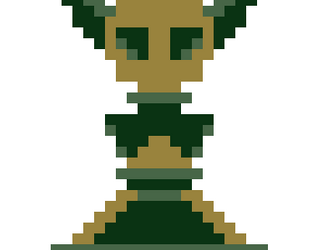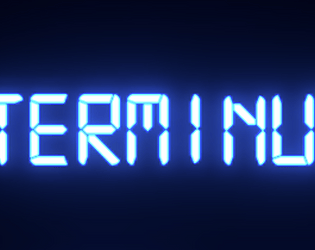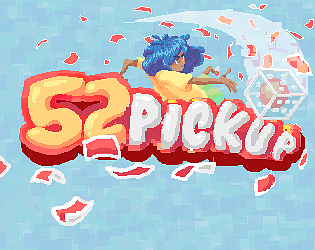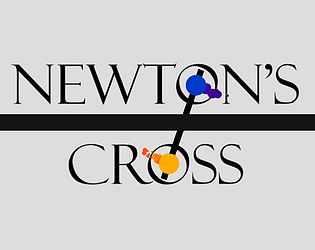Guys this is phenomenal! I did find some of the mechanics to be a bit punishing, like my rank going straight to E whenever I get hit, and not getting any i-frames after hit stun, but it was still super fun and I loved every second of it! I never made it above C-rank, but I thought I could hear some adaptive layering going on in the background, so props to your sound guy! The animations were great, too; I thought it was really funny the way I could just throw it back to dodge.
QCortex07
Creator of
Recent community posts
Being forgiving of player risk-taking is actually a really good game design philosophy, now that I think about it. Probably should have done that for my game...
It would have been nice to have some coyote time when jumping off the ledge; there were a lot of times when I hit jump too late and ended up dashing instead.
On my last run, the Barrow was on 1 HP for a solid two minutes (I had just managed to upgrade the turrets beyond level 1) and it was super hectic. Lots of fun!
Great work on the music! For a moment I thought that the music was getting faster as the round went on, but I guess that was just me panicking. The voice acting and sound effects were great, too! (SFXR, my beloved...)
Wow, I'm really sorry about the power outage. That's awful. I hope it came back on soon after.
I think I saw what you were going for, though. I noticed that I was able to open the plan in the middle of execution. Not sure if this is a bug, but if it's a feature, I think that maybe part of the game was going to involve stopping the code while it was executing and changing around the parameters. Just a guess, but cool if correct!
I love the little audio detail you put into the grass! I really need to start adding sound to my games...
I considered doing something like this, but I passed it up for something more complicated because I didn't think it would make for very interesting gameplay. Sure enough, you have 100% proven me wrong; thinking in looped space is actually really tricky!
Great puzzle! It took me a bit to figure out the game mechanic happening at the bottom, but when I pieced it together it blew me away! I literally said "oh my god, it's Tetris" out loud (it wasn't Tetris).
I will now proceed to lose 3 hours of sleep tonight thinking about what where the secret circumcircular octahedron was hidden...
Nice! I really like these kinds of games! The one thing I felt was missing was an indicator of where each instrument would start, since I like to be able to plan out my route early on, instead of making a guess and hoping for the best. Still very satisfying, though! The reverbed "NO" whenever I tried to go back too far made me laugh.
Really neat concept! However, as neat a puzzle it is, the fact that you have to backtrack really bogs it down. In fact, most games run in circles trying to figure out how to minimize backtracking. I spent most of the play time just struggling to jump on a box while lagging, waiting for the door open/close cutscene to finish, and forgetting which door takes me back to the previous room. The game looks wonderful, and I could definitely see myself playing a full version of this, but there are a lot quality of life improvements that would have to be made.
Ah, yeah. Sorry about that. That's something I was concerned about when making this game. I didn't know if my own ability to type would skew my sense of difficulty. But yes, your impression is entirely correct. At it's most basic, it is a timing and typing speed challenge.
If you're stuck because of this, here's a few tips:
- Type "#" to comment out a segment of code; this allows you to pre-write a command, and then delete the comment marker and save.
- Hold CTRL when using Backspace or the Arrow keys; if you use Google Docs or Microsoft Word enough, you know how this works.
- If worst comes to worst, you can type "north east", "south west", etc. to move diagonally.
- If you softlock yourself somehow, CTRL+R resets the level.
After having lived a good, full life as a dog, the first thing I am asked to as a human is to decide whether I "hypothetically" want to be my favorite vegetable. Such is life I suppose :)
Still waiting to hear what door I opened with that key...
Seriously, though, this had me smiling the whole way through! Unfortunately, I wasn't able to make it to end because of a bug stopped me from progressing, but what I did see was great!
Nice game! I had I little trouble getting the ball rolling (literally, not figuratively), but otherwise the game played pretty smoothly! I like to think that all the people in the chat are actually other people (or representations of other people) who helped you, but whether or not that's true, I hope you had fun making it!
I've developed a frustrated relationship with D&D and TTRPGs in general from playing for a few years with a group I feel doesn't want me there. It was fun in certain moments, but otherwise I was left feeling entirely inadequate, regardless if I was a player or a DM. I decided I'd stop going a few months ago, and I haven't touched TTRPGs since.
After playing this though, it brought back some of the joy in planning and thinking through dungeons and encounters. Trying and failing over and over to get the player through while also providing a challenge kind of desensitized myself to failure. It helps that you wrote the player's dialogue to be the friendliest, most patient, most engaged player than anyone I've ever met. I kind of want to try playing or running a game again after playing this. Thanks a lot!
Very well polished game! I love seeing the different ways people play with the theme; I had assumed it meant the player swapping roles with the obstacles, but there's just so much else that can be done with it.
I really like this level design philosophy of "here's a few constraints, there is no one solution." I know there are lots of games that get designed like this, but man, there REALLY need to be more games that get designed like this. Great work!
Nice job! I, as per usual, forgot to read the notes at the bottom, so I was really confused as to how this was "roles reversed" until I died, which ended up being a really enjoyable twist. When I was planning for this, I wasn't able to come up with a role-reversal that didn't somehow involve an AI agent taking the place of the player, but after playing this, I'm realizing that it wasn't necessarily the player's agency that had to be reversed, rather just some property that traditionally belongs to the player (in your case, it was the player's upgrade system going to the world, and the world's randomization system going to the player). Even if to you this seemed obvious, I think that was really well thought out!
I think something that the game is lacking in is readability: in order to make this sort of game work, the player has to be able to connect points on the map to the current room, and because they can only access one or the other at any given time while playing, they need to be able to remember the room layout. Here's the problem: if it weren't for the enemies and barriers, all of the rooms would be completely identical.
The simplest change I think you can make to fix this to add small cosmetic alterations to each of the rooms, sort of like what you're doing with the barrier blocks already. Easier said than done, of course; I know how confusing procedural generation can be, even in its simplest form. The fact that you pulled off a functioning procedural generation algorithm in under forty-eight hours, and, at least from what it sounds like, you've never attempted something like this before. Great job!
This was a really neat little game :) I'm glad I wasn't the only one to try the "develeoper instead of the player" idea; I was curious to see how to you exectued on it, and I think it reads way better than mine did! If you think about it, each edit to the game is like a branching level, so I could easily see this as becoming a full game given enough time. Great work!


